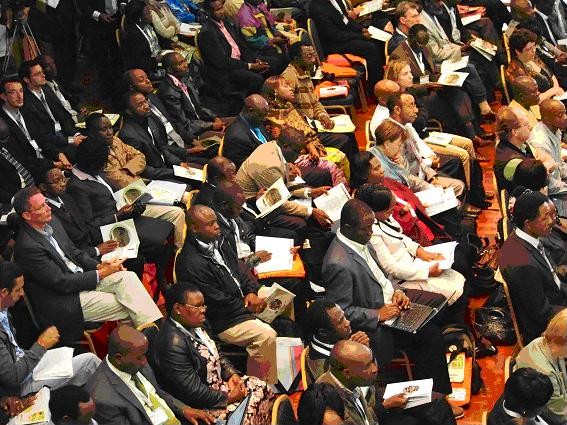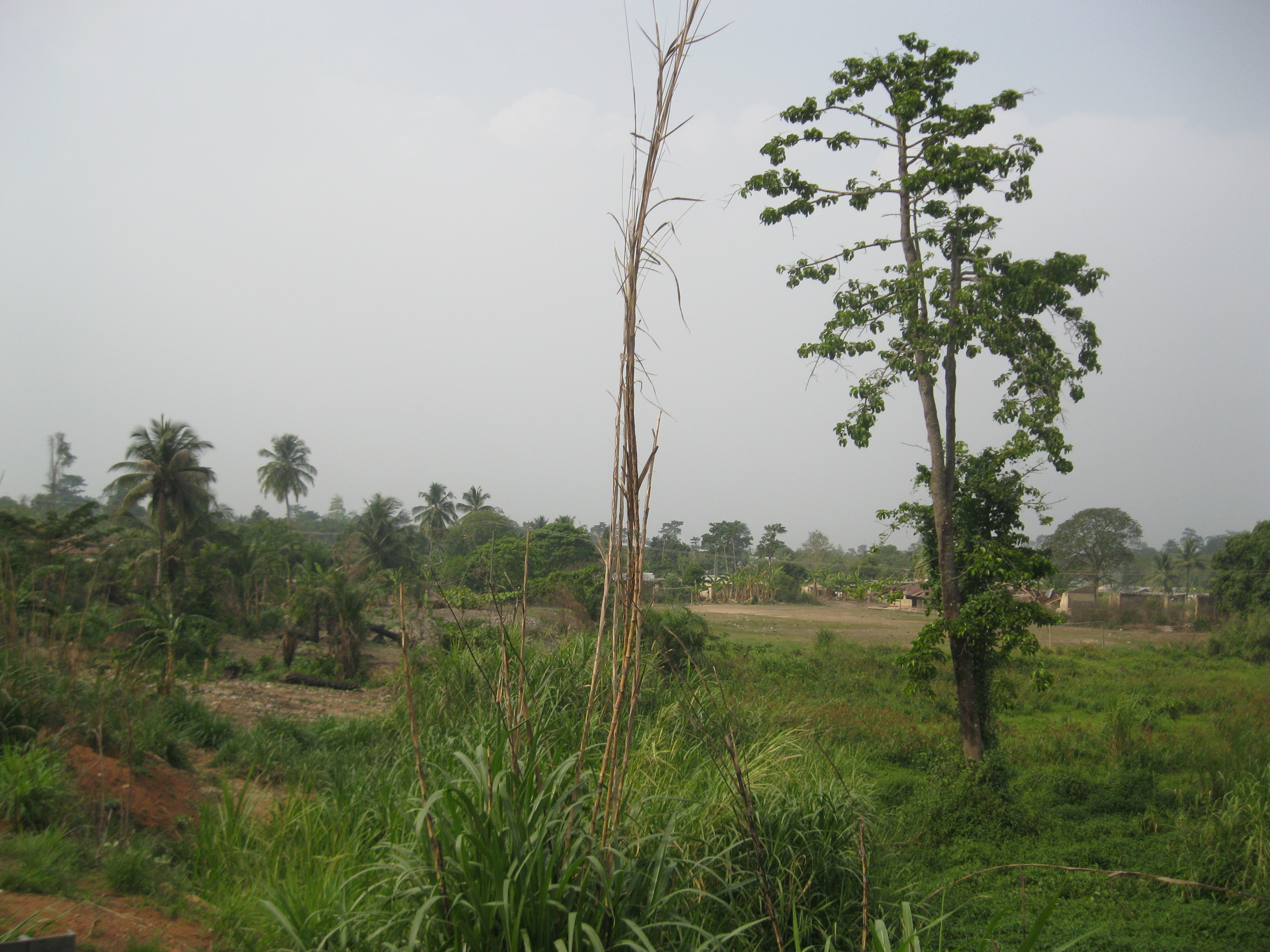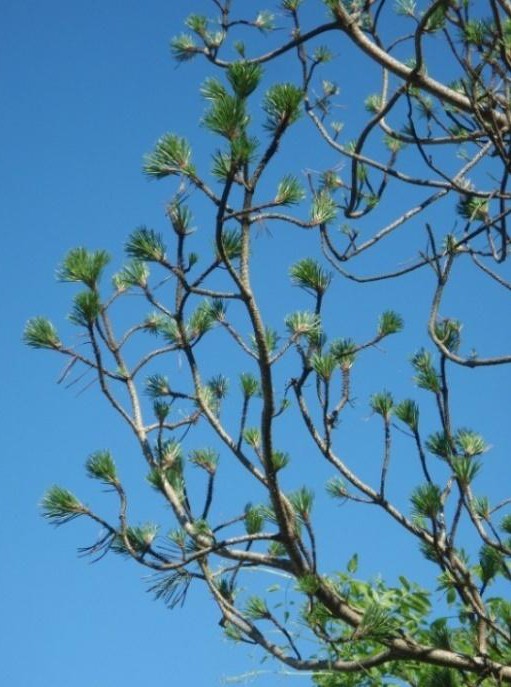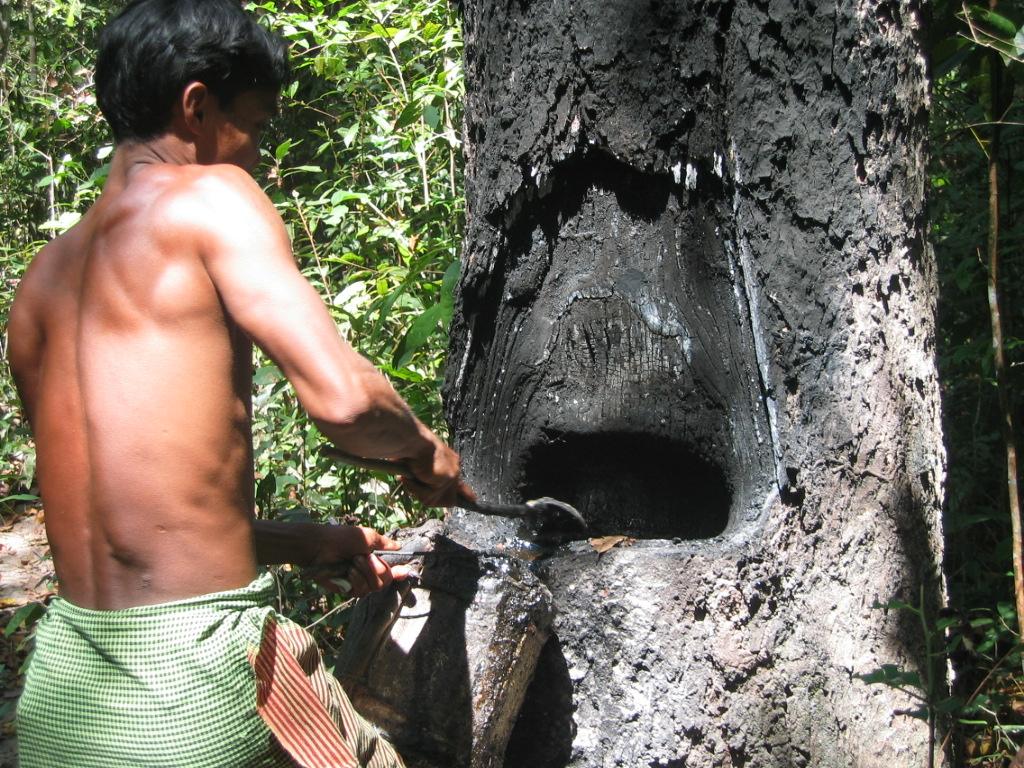
Participants during the opening Plenary Session: Landscape Approaches to Future Forest and Tree Resources
The IUFRO/FORNESSA Regional Congress kicked off at the diverse and scenic World Agroforestry Centre (ICRAF) in Nairobi, Kenya yesterday. This event which runs from the 25th -29th June marks the first Regional Congress in Africa, providing the opportunity for experts focused on Sub-Saharan African forest issues to come together to share and discuss the hot topics surrounding the region’s forests and trees.
The Congress opened with traditional Kenyan singers who performed for the over 300 participants coming from 40 plus African counties and over 50 countries worldwide – the largest gathering of forest experts Africa has ever seen.
The Congress is organized under the theme “Forests and Trees: Serving the People of Africa and the World” and highlights research under the following 6 themes:
1 – Forests and Climate Change
2 – Forests and Water
3 – Forest Policy, Governance and Trade
4 – Forest Biodiversity and Conservation
5 – Agro-forestry, Energy and Food Security
6 – Education, Training and Institutional Capacity Building
Integrated into the Congress is the ITTO/AFF Policy Day taking place on Thursday, June 28th, which focuses on the policy and science interface for sustainable forest management in Africa.
Scientific cooperation plays an important role in the future of African forest science and research and this premiere event serves to act as a catalyst of growth for the FORNESSA network by bridging the geographical barriers and bringing together scientists, researchers, forest managers and policy makers face-to-face- to discuss with their peers issues of paramount importance.
For official coverage of the Congress & photos from the day visit the IISD reporting services homepage at http://www.iisd.ca/ymb/forest/iufrofornessa/c1/.
Combatting Climate Change Comprehensively
By Ben Chikamai (Kenya Forestry Research Institute)
IUFRO Board Member, Kenya
PDF for download

Degraded forest landscape in the Offinso District, Ghana. The original high forest cover has been modified through over-exploitation of wood resources, agriculture activities, and establishment of human settlements. (Photo by Ernest Foli, FORNESSA)
African forest policy makers and governments could benefit by using a recent study as a template to help bring climate change adaptation into the mainstream of national development strategies.
The study, conducted in two forest-dependent areas in Africa, emphasizes cross-sectoral planning – recognizing and incorporating interacting priorities, such as agriculture, health, forestry, land-use planning, water resources, energy, education, etc. – as a key element in implementing any effective climate change adaptation strategy.
Forests can play an important role in achieving climate change adaptation goals in Africa. But sustainable forest management decisions alone can’t accomplish that. Policy decisions – for forests as well as other resource areas – must complement one another. At present, impacts from some of those other sectors may actually be threatening the forests.
There are a number of pressures on Africa’s forests – agricultural expansion and forest over-use among them. Reducing non-climatic pressures, in a logical, prioritized manner, can help reduce the vulnerability of forest ecosystems. That’s crucial because many people in Africa are highly dependent on forest goods and services. Those people are, and will continue to be, particularly vulnerable to the impacts of climate change. Improving the capability of forest dependent communities to adapt to a changing climate will reduce that vulnerability.
The study: Enhancing Adaptation of Forests and People in Africa – Development of Pilot Cases for Selected Forest Ecosystems in Ghana and Malawi, examined forest issues related to climate change in selected areas of those countries. The authors, E.G. Foli and S. Makungwa, worked in those specific areas because they represent typical examples of the ecological and socio-economic situation prevalent in Sub-Saharan Africa, so the findings could also be applied to countries in West, Central, Southern, and parts of East, Africa.
Among other findings, the study confirmed a general trend of increasing mean annual temperatures and a decline in mean annual rainfall. In the Ghana pilot area this has resulted in forest loss due to wildfire; a decline in the availability of non-timber forest products; reductions in agricultural crop yields; and declining potable water supplies and the associated risk of water-borne diseases. In the Lake Chilwa area of Malawi, in addition to declining potable water supply and its associated disease risks, there has also been poor productivity on tree farms; loss of indigenous trees in communal areas, riverbanks and surrounding forest reserves; a decline in agricultural productivity; and declining fish catch from the lake.
While the study noted how changing climatic conditions can adversely affect livelihoods, health and food security in those communities, it also noted examples of locally initiated adaptation strategies developed to mitigate the impacts of the changing climate. By compiling existing information, including the needs of stakeholders in the various inter-related resource areas, consulting with local communities and assessing and evaluating each project site, enhanced and concrete adaptation measures for the pilot areas were developed.
Then, a priority setting exercise was carried out to identify appropriate and relevant adaptation strategies and activities that would best serve the communities. Similar techniques could be used across a much wider area, the authors say, but that will require political will, financial commitment, and an integrated multi-sectoral – even trans-national – approach. It’s a challenge, they agree, but one that must be faced.
The full study can be found at: http://www.fornis.net/content/enhancing-adaptation-forests-and-people-africa-development-pilot-cases-selected-forest-ecosy
Read more…
Bikash Rath
Coordinator, IUFRO Working Party on Community Forestry (9.05.06)
PDF of full paper for download
Summary
Forests are the major source of our ecosystem services that the society avails for its sustenance and healthy growth. Forestry thus has continued to have a very complex and large social dimension with a number of interfaces between forest and society. These interfaces range from exploitation to protection & conservation. They form the key to an interdisciplinary approach between forestry sciences and social sciences, and create the potential for a mutual collaboration between the two. Read more…
By Jean-Michel Carnus, Coordinator, IUFRO Division 8
(INRA, France)

Since 2003, 26 European specialists in humus forms have been working to develop a standardized system of classifying the condition and configuration of topsoil layers adapted to European ecological conditions.
The result of their work could become an international reference, of which, none exists today.
Studies have shown that soils store more carbon than terrestrial vegetation and the atmosphere combined, and also that soil organic matter plays a key role in the global carbon cycle as it stores huge amounts of carbon and thus counters global warming.
It is also known that some soil organic matter remains stable for thousands of years while other soil organic matter degrades quickly and releases carbon into the atmosphere thereby reinforcing the greenhouse effect.
So, as the earth’s climate warms and concerns increase about the amount of carbon in the atmosphere, a standardized system will allow a better understanding of the role of the humus forms in the carbon cycle – and the conditions under which they represent a sink (absorbing carbon), or a source (releasing carbon into the atmosphere).
Humus forms – the brown or black layers consisting of partially or wholly decayed matter – provide nutrients for plants and increase the ability of soil to retain water. These layers contain a large part of the total soil organic carbon and provide an interface between the atmosphere and the mineral soil, representing an important linkage to aquatic systems.
The main challenge the specialists have sought to address is the lack of harmony that exists in classification keys for humus forms – they are different in every European country.
Those classification differences mean that data cannot be easily exchanged among research teams, land managers and policy makers working with soils in different countries.
The specialists’ aim is to improve the compatibility of those established national classification systems and to develop a unified European reference base for humus forms. The classification system is geared primarily to West European countries between 40-60 degrees of latitude, but it’s expected to work in other ecosystems of equivalent climate. It has already been successfully tested in some forests in Iran.
While aimed primarily at forest soils, the classification system is also applicable to grasslands, pastures and wetlands.
One of the keys to this standardization is to recognize differences in local ecosystems and the need to analyze the soil horizons – layers parallel to the soil surface, whose physical characteristics differ from the layers above and beneath – of each different humus form.
The European specialists have set up protocols for the assessment and sampling of certain horizons and have developed definitions for specific diagnostic horizons, materials and their designation.
Acceptance of this classification system will provide a valuable tool to help us better understand the connection between different humus forms and carbon storage in the soil and the response of soil organic matter to a warming climate.
To view the full report, go to: [http://www.sciencedirect.com/science/article/pii/S001670611100139X] (summarized as published article)
and [http://hal.archives-ouvertes.fr/docs/00/56/17/95/PDF/Humus_Forms_ERB_31_01_2011.pdf] (unpublished complete document)
———————————————————–
Media Contact
Jean-Michel Carnus: +33-5-57122865 or jean-michel.carnus(at)pierroton.inra.fr
Gerda Wolfrum: +43 1 877 0151 17 or wolfrum(at)iufro.org
———————————————————–
Related Links
Publications:
IUFRO Division 8 – Forest Environment: http://www.iufro.org/science/divisions/division-8/80000/
———————————————————–
Photo Credits
New Humus forms, in a structured dynamic system of classification. Photo provided by Augusto Zanella, Deputy Coordinator of IUFRO 8.02.03.
Read more…
Interview with IUFRO Division 9 Coordinator Daniela Kleinschmit
Assoc. Prof. Dr. Daniela Kleinschmit is Coordinator of IUFRO Division 9 “Forest Policy and Economics”. She is heading the unit on forest policy research at the Swedish University of Agricultural Sciences (SLU).

Photo provided by Daniela Kleinschmit
Q: Dr. Kleinschmit, how did you get involved in IUFRO and in how far has your work and career in IUFRO been beneficial for your scientific endeavors?
A.: I got involved in IUFRO about 12 years ago thanks to the supervisor of my PhD thesis, Max Krott. My first IUFRO conference was the World Congress in Kuala Lumpur in 2000. It was fascinating to meet peers from all over the world and exchange ideas, experiences and knowledge. Personal contacts are particularly helpful for developing transnational research projects and writing or organizing publications such as special issues of journals. In addition, a network like IUFRO helps to raise awareness for new triggering questions. Read more…
By: Jurij Beguš, Coordinator, IUFRO 9.01.03 Extension and Knowledge Exchange
(Slovenia Forest Service, Department for Forestry Technique)

Expert knowledge – advice and-or recommendations from those who have spent much time researching and learning about a given subject area – is often used by resource managers who do not themselves have the time or resources to collect all the data necessary to make a sound decision.
That expert knowledge, which can be used in highly diverse situations in various ecosystems and geographical areas, can assist with forest management, eco- regionalization, species conservation or environmental impact assessment. Read more…
Forests: Medicine for Body and Soul
By Hannu Raitio, Coordinator of IUFRO Task Force ForHealth
(DG Finnish Forest Research Institute, Metla)
 PDF for download
PDF for download
Imagine a doctor who, rather than advising the usual: “Take these pills daily for the next two weeks,” says instead: “Take long walks in the forest daily for the next two weeks. That should get you back to normal.”

Okay, that’s a bit fanciful. But, it may not be too big a stretch.
There is a growing body of scientific research that suggests forests and other natural, green settings can reduce stress, improve moods, curtail aggressiveness and – possibly – even strengthen our immune systems.
Medical and health care costs are a skyrocketing financial burden in many, if not all, countries around the world – often funded through taxation or other common responsibility arrangements. Read more…
By Robert Jandl, Deputy Coordinator of IUFRO Division 8
(BFW, Austria)
PDF for download
In the coming decades, forests will play a major role in our planet’s carbon cycle and in our efforts to manage the amount of carbon in the atmosphere.
Getting a better understanding of whether that role might be good (a sink, absorbing carbon) or bad (a source, adding carbon to the atmosphere), motivated a study by Yude Pan and colleagues, recently published in Science Express.
The study identifies global forests as the major terrestrial carbon sink (as opposed to grasslands, peatlands or agricultural lands). It is the first such study to base conclusions on forest inventory and land cover data instead of simulation results. Read more…
End trade in detrimental ornamentals to save forests
By Eckehard Brockerhoff, IUFRO Deputy Coordinator of Division 7
(SCION, New Zealand)
PDF for download
 In a provocative attempt to save the world’s forests, a group of 70-plus scientists from 17 countries are asking trade policy makers around the globe to phase out such international trade in high-risk plants that put forest health at high risk while offering limited economic benefit.
In a provocative attempt to save the world’s forests, a group of 70-plus scientists from 17 countries are asking trade policy makers around the globe to phase out such international trade in high-risk plants that put forest health at high risk while offering limited economic benefit.
If the scientists’ proposal is implemented, it would mean an end to all international trade in containerized ornamental plant seedlings and trees intended as plants for instant landscape planting. Read more…
Traditional Forest-Related Knowledge: Sustaining Communities, Ecosystems and Biocultural Diversity
By Su See Lee, IUFRO Vice-President
(FRIM, Malaysia)
PDF for download
A new book invites forest scientists to think outside the box – or, perhaps outside the laboratory – and make more of an effort to incorporate elements of traditional knowledge in their research and forest management activities.
The book, Traditional Forest-Related Kno wledge: Sustaining Communities, Ecosystems and Biocultural Diversity, published by Springer just this month, takes a long look at the contribution traditional knowledge has made and continues to make to sustainable resource management around the world. Read more…
wledge: Sustaining Communities, Ecosystems and Biocultural Diversity, published by Springer just this month, takes a long look at the contribution traditional knowledge has made and continues to make to sustainable resource management around the world. Read more…






 Okay, that’s a bit fanciful. But, it may not be too big a stretch.
Okay, that’s a bit fanciful. But, it may not be too big a stretch.
